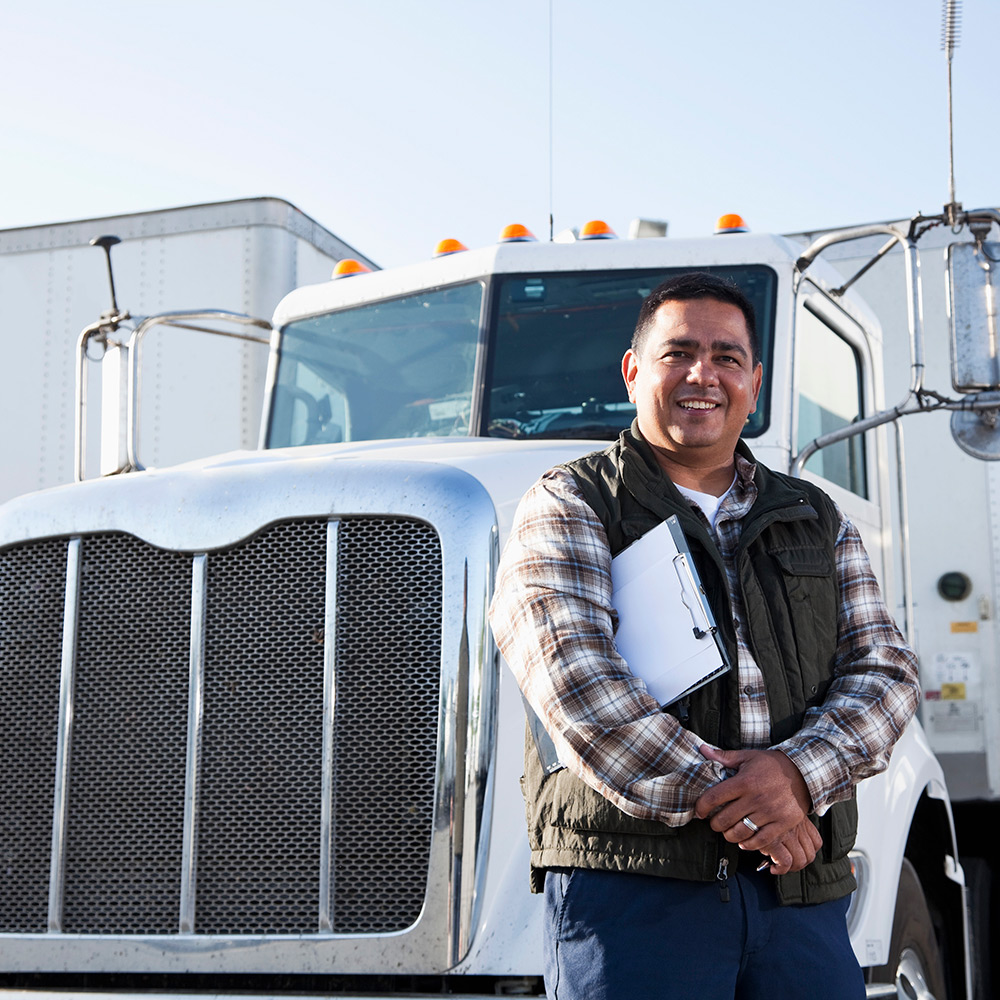
Solving Leasing Challenges through Toll Management
Over the past couple of years, leasing has become increasingly important to commercial fleets.
Disrupted supply chains have made fewer vehicles and equipment available for purchase, which makes leasing a more feasible option. Leasing also offers an accessible path for fleet managers and owner-operators alike to capitalize on the fact that the potential for making money in trucking is currently at an all-time high. Discounts on fuel, maintenance, and insurance are currently being offered by carrier companies to encourage owner-operators to “lease on” with them, and the result is a win-win.
Yet as with most upward trends, this one brings both benefits and challenges in its wake. There are complications both for leasing companies and their lessees, especially where tolling is concerned. Answering questions, such as which party is responsible for paying tolls and how to avoid the fees associated with tolling violations, can be problematic when leasing is part of the equation.
Fortunately, however, toll management programs provide a solution for parties on both sides of the leasing spectrum — one that can be seen clearly with a closer look. Whether you are leasing a vehicle or work for a leasing company, here is what you should know about managing toll.
The Leasing Labyrinth
In the consumer automotive world, long-term leases are typically registered in the name of the lessee. As a result, it’s relatively straightforward to track down the driver of a leased car who passes through a toll location without paying. A plate image gets captured and sent to the Department of Motor Vehicles that issued the plate, which will provide the lessee’s name and address so that a violation notice can be sent.
But in the case of commercial fleets, DMV records typically list the name of the leasing company as a registered owner, so a violation often ends up being sent their way. It then becomes their responsibility to track down their customer to pass along the invoices and violations incurred by the fleet— and to then apply additional internal resources and efforts to attempt to recoup the expense charged by the DMV in the state where toll was accrued. Typically, leasing companies are forced to pay these violations themselves regardless of whether they can charge the expense back to the fleet or not
For lessors, this can mean workforce hours spent away from the company’s primary mission. For lessees, the extra time it takes for processing can translate to the accrual of hefty administrative fees — both from the toll authorities and the leasing companies themselves, which may tack on an additional fee for each toll encounter.
In addition, a lessor might have multiple locations, each with its own contract terms tailored to a particular designated market area (DMA). Each location is also likely to include a combination of contract types. Many lessors offer both long-term leases and short-term rentals. While some lessors may attempt to have long-term leases pay for their own tolls and register their own transponders, it’s impractical and difficult to do this with short-term rentals.
The result of all these factors is an administrative nightmare on both sides of the leasing equation.
Where Do I Pay?
In addition to challenges inherent in the way commercial leasing is structured, current methods of toll collection make toll management even more complex.
The most ideal tracking method for tolling is offered by transponders: Their unique codes are used to promptly process payment from an account, avoiding violations. If there are problems accessing the account, those same codes can easily be matched to a database containing the names and addresses of the parties responsible for payment.
Because the devices are designed to work best in passenger cars, however, there are often transponder misreads, especially in commercial vehicles. Transponders may also be absent in leasing scenarios. In both scenarios, the toll authority will attempt to capture the toll using a license plate. Trying to use the license plate brings us back to the challenges of vehicle registration mentioned above.
Up until recently, it was possible for lessees to avoid these difficulties altogether by paying in cash when they drove through a toll booth. But as cashless tolling has taken off, this option has largely disappeared from toll roads throughout the country. Simply put, this longstanding workaround no longer works.
Finding Solutions
These challenges do not need to outweigh the benefits of leasing. Whether considered from the perspective of lessors or lessees, toll management programs offer a solution that is calibrated to the challenges of the current landscape.
A solid toll management program includes all fleet vehicles in its own database, and it answers any question of where to direct tolling notices by acting as the responsible party. Because it provides a dedicated and digitized focus on processing tolls, it does also eliminate the administrative fees associated with time lags.
For lessees accustomed to receiving bills from leasing companies that tack on toll encounter fees, toll management programs offer a consistent, predictable fee. Along with reduced fees and violations, lessees will receive a single, consolidated invoice that accounts for all travel.
Toll management programs also offer to lessors, at a minimum, plate coverage for all leasable properties — including vehicle tags and tags on trailers used to carry leased equipment. Whenever possible, the program will also equip properties with transponders. Moreover, the program’s wide area of coverage is liable to extend beyond the lessor’s DMA, which is important when the rented property is used for transport into other states.
Some programs, such as Bestpass, even offer an online portal designed to simplify toll management on the customer side. Such portals can accept data uploads including vehicle lists, cab cards and truck photos, and can perform targeted data searches across all toll transactions. It is also possible to scan and upload violation notices to the portal, delegating to the program the task of addressing the violation with the appropriate tolling authority.
In Real Terms
What do the challenges of toll mean for lessors on a day-to-day basis? One Bestpass customer used to pay toll violations manually. They reported receiving an average of 600 envelopes per day of violations from various toll authorities. Bestpass put transponders in the service and delivery vehicles that the leasing company owned. They registered all the other license plates on their trucks and trailers with the relevant toll authorities. Since partnering with Bestpass for toll management they estimated that they save 560 hours each month dealing with toll violations, and tens of thousands of dollars each year, amounting to 60% cost savings in toll authority fees.
The Bottom Line
While the upward trend in leasing carries its share of challenges, especially where tolling is concerned, toll management programs are designed to address these challenges head-on. Such programs could even be considered as a key that unlocks the greater possibilities of leasing for those who might otherwise be discouraged by its complexity.
Request a Demo of Our Toll Management Software Today!
Not sure which Bestpass plan is right for you? Our tolling specialists are here to help. They can identify the right transponder strategy to save you the most money and time.

